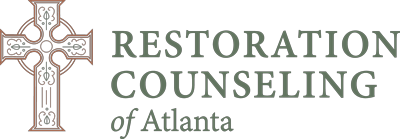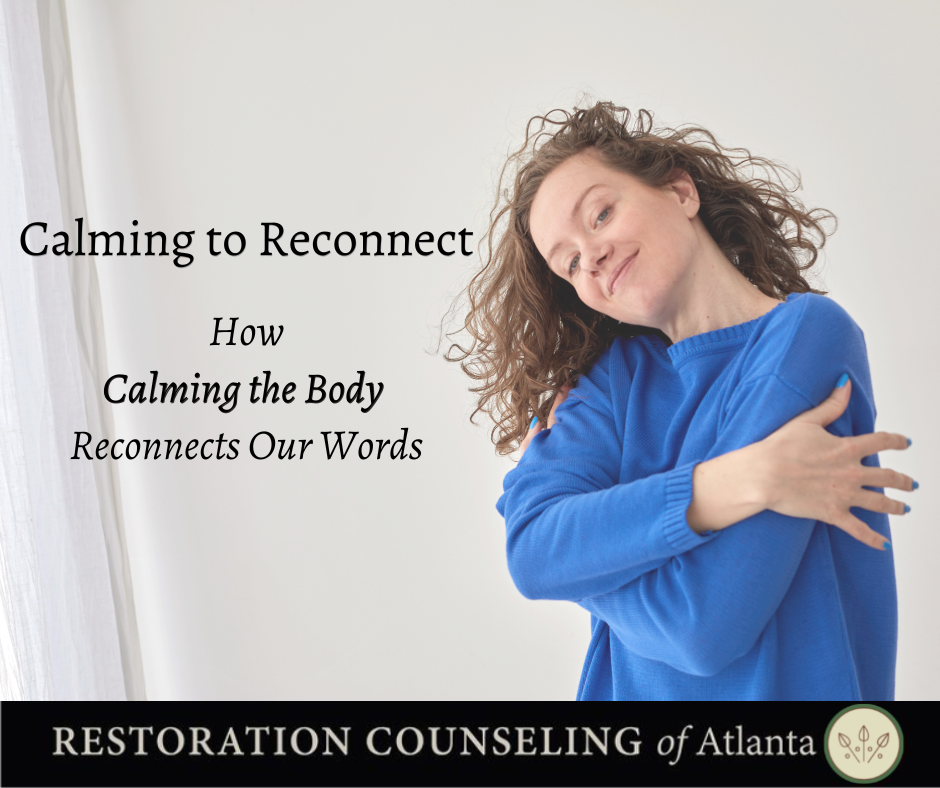How Calming the Body Reconnects Our Words
“Traumatic events are almost impossible to put into words.” – Dr. Bessel van der Kolk
Have you ever found yourself wanting to tell your friend, mentor, or counselor about a traumatic event only to feel overwhelmed and not be able to find the words? We lose language access when we are in trauma. We also have difficulty in therapy when recalling or verbally processing traumatic events. This difficulty occurs in moments of trauma recall because the area responsible for speech production (Broca’s area) shuts down to focus our resources on surviving the moment.
What Happens
When our brain scans for safety, it recalls the trauma in the present, not the past, compromising our ability to access words and describe our experiences. If we do not help the body register that the traumatic event is in the past (by using approaches like EMDR), then when the event comes up in your mind (triggers, flashbacks, dreams, anniversaries of the event), your body will try to “help” by shutting down Broca’s area again. This protective brain cycle can leave us feeling stuck, helpless, and weary.
Remember, danger disconnects, and safety reconnects. It restores the connection between the brain, body, language, and a sense of time. It is best practice to establish (or re-establish) safety before talking about a traumatic event. When the body feels a sense of safety or grounding, Broca’s area reconnects, and we regain access to words and the ability to make meaning of our experiences.
Four Body-focused or Somatic Practices
Identifying things in your physical world orients your mind to notice that you are in this moment and not in your past painful event. This allows your body to calm down and slows your heart rate.
5,4,3,2,1 Counting
This is not a memory game, so don’t worry about trying to remember all the things you list. Try not to repeat objects if possible. You have permission to simply try and see if this brings you relief.
Name 5 things you can see.
Inhale through the nose, Exhale slowly through the mouth.
Name 4 things you can touch.
Inhale through the nose, Exhale slowly through the mouth.
Name 3 things you can hear.
Inhale through the nose, Exhale slowly through the mouth.
Name 2 things you can smell;
Inhale through the nose, Exhale slowly through the mouth.
Name 1 thing you can taste;
Inhale through the nose, Exhale slowly through the mouth.
Other Things to Help
Tapping (butterfly hug)
Cross your arms over your chest so that each hand touches the opposite upper arm or shoulder. Then move your hands like the wings of a butterfly to tap your arms/shoulders in an alternating rhythm. Feel free to experiment with the speed and rhythm. Just remember to alternate sides as you tap to access the benefits of bilateral stimulation. Bilateral stimulation is used in EMDR to activate the right and left sides of the brain in a way that calms, resets, and grounds the body. This simple technique can help bring you back to the present moment and calm your emotional state.
Box Breathing
This exercise, made popular by Navy Seals, requires inhaling for 4 counts, holding your breath for 4 counts, exhaling for 4 counts, and then resting for 4 counts. Repeat 4 times. Inhale, hold, exhale, rest-repeat
Nature Time
Go outside, if possible, to grass, sand, or other areas with natural textures and allow your feet to feel the sensations of the natural environment. You can just stand there for a few moments and focus on the sensation of the blades of grass or the warmth of the sun on your skin.
Main Takeaways
As a recap, here are the main takeaways:
- Our bodies are designed for survival.
- When our body perceives danger (real or imagined), safety mechanisms are activated.
- When we are in safety mode (fight, flight, fawn, freeze), our brain shuts down areas such as the language center to focus on surviving the moment.
- When we try to talk about the experience and our language center continues to disconnect, this can lead to feeling stuck, overwhelmed, anxious, or hopeless.
- If we shift to focusing on safety in a way the body can register, our language and time stamp portions of the brain come back online.
- When our language & time stamps are accessible, our bodies can shift out of survival mode and move toward healing.
I hope these simple tools can help you (or a loved one) regulate your body, access safety, and reconnect your language center. Perhaps these practices can help you manage triggers between counseling sessions.
 Written by: Rebeca Gilbert, 678-534-3824, ext. 120
Written by: Rebeca Gilbert, 678-534-3824, ext. 120
Online Counseling
Rebeca believes that change happens in the context of kindness when clients feel safe, seen, and heard. She is passionate about empowering her clients about what happens in their bodies when they are triggered and dysregulated. She works with them to help them connect how their present triggers are connected to their stories and pain. Rebeca primarily uses a blend of Storywork, attachment therapy, and EMDR therapy to help clients heal and grow.

